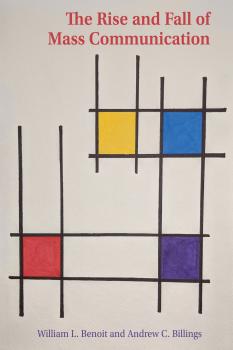ТОП просматриваемых книг сайта:
Зарубежная деловая литература
Различные книги в жанре Зарубежная деловая литература, доступные для чтения и скачиванияАннотация
Аннотация
In 2003, the President and the U.S. Congress established the Department of Homeland Security. From the beginning, its mission was clear: prevent terrorist attacks, protect against threats to America's safety and security, and prepare the nation to respond effectively to disasters, both natural and man-made. This monumental mission demands a comprehensive strategy. It also requires a crystal-clear explanation of that strategy to Americans and their allies worldwide. In a revealing new book, Homeland Security: Assessing the First Five Years , Michael Chertoff provides that explanation. In a refreshingly candid and engaging manner, America's former homeland security secretary depicts the department's long-term approach, what it has achieved, and what it has yet to do. The strategy begins with the threats America faces, from terrorist groups like al Qaeda to hurricanes like Ike or Gustav. «Once these threats are identified,» Chertoff writes, «we can confront them, using every tool at our disposal. We can stop terrorists from entering the country, and discourage people from embracing terrorism by combating its lethal ideology. We can protect our critical assets and reduce our vulnerabilities to natural disasters. We can plan and prepare for emergencies and respond in a way that minimizes the consequences. And we can work closely with our allies abroad to reduce the risk of future disasters.» In each of these areas, Chertoff informs the reader what the nation has done and what it still must do to secure its future. How well has this strategy fared in a post-9/11 world? Since that fateful day, there have been no global terror attacks on American soil. Yet in the face of continued dangers, Michael Chertoff warns repeatedly against complacency. He urges America and its leaders to strengthen their resolve, stay the course, and build creatively on past successes.
Аннотация
At 1:27 on the morning of August 4, 2005, Herbert Manes fatally stabbed Robert Monroe, known as Shorty, in a dispute over five dollars. It was a horrific yet mundane incident for the poor, heavily African American neighborhood of North Philadelphia—one of seven homicides to occur in the city that day and yet not make the major newspapers. For Michael B. Katz, an urban historian and a juror on the murder trial, the story of Manes and Shorty exemplified the marginalization, social isolation, and indifference that plague American cities. Introduced by the gripping narrative of this murder and its circumstances, Why Don't American Cities Burn? charts the emergence of the urban forms that underlie such events. Katz traces the collision of urban transformation with the rightward-moving social politics of late twentieth- and early twenty-first-century America. He shows how the bifurcation of black social structures produced a new African American inequality and traces the shift from images of a pathological black «underclass» to praise of the entrepreneurial poor who take advantage of new technologies of poverty work to find the beginning of the path to the middle class. He explores the reasons American cities since the early 1970s have remained relatively free of collective violence while black men in bleak inner-city neighborhoods have turned their rage inward on one another rather than on the agents and symbols of a culture and political economy that exclude them. The book ends with a meditation on how the political left and right have come to believe that urban transformation is inevitably one of failure and decline abetted by the response of government to deindustrialization, poverty, and race. How, Katz asks, can we construct a new narrative that acknowledges the dark side of urban history even as it demonstrates the capacity of government to address the problems of cities and their residents? How can we create a politics of modest hope?
Аннотация
Projects can go over budget, exceed deadlines, or deliver restricted features and quality. This can result in economic damage for companies and their clients.
The difficulties arise at source. Established metrics and management methods slow projects down by creating conflicts in operations and decision-making.
A radically new approach is needed; one that features
• simple, constraint-oriented management,
• clear, robust priorities,
• company-wide rather than locally focused optimization,
• a focus on speed, on ProjectsFlow.
Discover how you can:
• complete more projects with the same amount of resources,
• reliably deliver all projects to specs,
• significantly shorten project lead times.
The difficulties arise at source. Established metrics and management methods slow projects down by creating conflicts in operations and decision-making.
A radically new approach is needed; one that features
• simple, constraint-oriented management,
• clear, robust priorities,
• company-wide rather than locally focused optimization,
• a focus on speed, on ProjectsFlow.
Discover how you can:
• complete more projects with the same amount of resources,
• reliably deliver all projects to specs,
• significantly shorten project lead times.
Аннотация
{\rtf1\fbidis\ansi\ansicpg1252\deff0\deflang1031{\fonttbl{\f0\fswiss\fprq2\fcharset0 Calibri;}{\f1\fnil\fcharset0 MS Shell Dlg;}}
\viewkind4\uc1\pard\ltrpar\hyphpar0\sl276\slmult1\lang2057\f0\fs22 The Western Balkan countries have been both a popular subject matter for diachronic analysis and a 1990s favorite. The significant changes that followed the most recent times of conflict in the region mostly evolve around the process of Europeanization. Despite the plethora of analyses, most approaches to the Western Balkans suffer from theoretical stagnancy, ex parte political practice, and detachment of politics from societal needs.
\par This volume is the work of a team of theorists and practitioners who attempt a multidisciplinary approach to Western Balkans reality. \i An Agenda for the Western Balkans \i0 offers a critical view on issues that have been over-analyzed in mainstream terms and opens a discussion that will occupy researchers and practitioners for years to come. It addresses novel topics and engages in innovative approaches that cut across disciplines of social sciences (political science, international relations, sociology, historiography, geography, political economy) and levels of analysis (local, national, regional, European, global). This collection is a pioneer theoretical and practical guide towards a sustainable future for the Western Balkans.\lang1031\f1\fs17
\par }
\viewkind4\uc1\pard\ltrpar\hyphpar0\sl276\slmult1\lang2057\f0\fs22 The Western Balkan countries have been both a popular subject matter for diachronic analysis and a 1990s favorite. The significant changes that followed the most recent times of conflict in the region mostly evolve around the process of Europeanization. Despite the plethora of analyses, most approaches to the Western Balkans suffer from theoretical stagnancy, ex parte political practice, and detachment of politics from societal needs.
\par This volume is the work of a team of theorists and practitioners who attempt a multidisciplinary approach to Western Balkans reality. \i An Agenda for the Western Balkans \i0 offers a critical view on issues that have been over-analyzed in mainstream terms and opens a discussion that will occupy researchers and practitioners for years to come. It addresses novel topics and engages in innovative approaches that cut across disciplines of social sciences (political science, international relations, sociology, historiography, geography, political economy) and levels of analysis (local, national, regional, European, global). This collection is a pioneer theoretical and practical guide towards a sustainable future for the Western Balkans.\lang1031\f1\fs17
\par }
Аннотация
Information about Bitcoin, Ethereum, Blockchain and other cryptocurrencies for interested parties, for beginners and advanced. To be active in the emerging world of cryptocurrency, you must first to understand the systems that underpin it and that will help to shape the future. It is vital that you understand three fundamental pieces of information before you begin any activity related to cryptocurrencies. Without these three key considerations, you cannot fully understand and navigate the intricacies of the crypto world. Without these three foundational rules, you become extremely vulnerable to financial losses if you become active. For that reason, you should read thus book. Internalize the information and let them sink deep into your subconscious. The principles in this bool must be applied intuitively. Gauge everything—every single thought and decision—by these principles. With these three principles at the core of your every decision, you will be safe from fraud and you will understand how our world is going to work in the near future.
Аннотация
The best strategies for investing in new crypto coins, ICOs, token sales and cryptocurrencies like Bitcoin, Ethereum and many others. An ICO is an initial investment in the construction of a new crypto system or a new cryptocurrency There are of course great opportunities and also risks connected with that. There is currently a great feeling of euphoria around cryptocurrencies; yet at the same time, it is still very much a Wild West with few lawmen and lots of desperados. Many of these characters present an honest appearance and claim to have a high level of motivation to change the world for the better. But, as with all lucrative, new industries, many are bandits whose motives are generally more focused on changing their own bank balance—not the world. The situation is very opaque and people who do not do a lot of research can very quickly lose a lot of money. In the crypto world, these rip-off merchants are everywhere.
Аннотация
Syria is undergoing a stage of transformation, including political and social changes. This unique book focuses on the transformations in creative industries and presents a collection of research papers describing and analyzing this pivotal period, in which their role evolved from producing tangible cultural products to becoming an active player in the maintenance of knowledge and a source of support and revenue.
Аннотация
Demands on a primary packaging material are not easy to meet these days. Increasingly, intense optical inspection, zero defect programs, and higher regulatory specifications require that drug packaging materials can no longer be taken for granted. Bringing us to the material «glass»: What is glass anyway? How does it react with my drugs? Can I freeze it? Why is it breaking? Why is my drug being adsorbed to it? Why is this over 100-year-old borosilicate glass still the gold standard? If you have asked yourself these or other glass-related questions, this book is the right choice for you. It will guide you through the world of glass in a comprehensible and pharma-focused manner. Furthermore, this guide will keep you well-covered with the fundamentals on your first voyage into the world of glass.
Die Anforderungen an Primaerpackmaterialien sind heutzutage nicht leicht zu erfuellen. Intensive optische Pruefungen, Null-Fehler-Programme und strengere Behoerdenanforderungen haben dazu gefuehrt, dass Hersteller ein erhoehtes Augenmerk auf Packmittel fuer Medikamente richten muessen. Nehmen wir zum Beispiel den Werkstoff Glas: Was ist Glas ueberhaupt? Wie reagiert es mit meinen Arzneimitteln? Kann ich es einfrieren? Warum geht es kaputt? Warum lagert sich mein Medikament auf der Glasoberflaeche an? Warum ist Borosilikat-Glas, das es schon seit über 100 Jahren gibt, immer noch der Goldstandard? Wenn Sie sich diese oder andere Fragen rund um Glas schon einmal gestellt haben, ist dieses Buch das richtige fuer Sie. Es wird Sie umfassend und aus dem pharmazeutischen Blickwinkel durch die Welt des Glases fuehren. Gleichzeitig wird dieses Handbuch Sie auf Ihrer ersten Reise in die Welt des Glases sicher geleiten und Ihnen alle Grundbegriffe erlaeutern.
Die Anforderungen an Primaerpackmaterialien sind heutzutage nicht leicht zu erfuellen. Intensive optische Pruefungen, Null-Fehler-Programme und strengere Behoerdenanforderungen haben dazu gefuehrt, dass Hersteller ein erhoehtes Augenmerk auf Packmittel fuer Medikamente richten muessen. Nehmen wir zum Beispiel den Werkstoff Glas: Was ist Glas ueberhaupt? Wie reagiert es mit meinen Arzneimitteln? Kann ich es einfrieren? Warum geht es kaputt? Warum lagert sich mein Medikament auf der Glasoberflaeche an? Warum ist Borosilikat-Glas, das es schon seit über 100 Jahren gibt, immer noch der Goldstandard? Wenn Sie sich diese oder andere Fragen rund um Glas schon einmal gestellt haben, ist dieses Buch das richtige fuer Sie. Es wird Sie umfassend und aus dem pharmazeutischen Blickwinkel durch die Welt des Glases fuehren. Gleichzeitig wird dieses Handbuch Sie auf Ihrer ersten Reise in die Welt des Glases sicher geleiten und Ihnen alle Grundbegriffe erlaeutern.
Interest Representation and Europeanization of Trade Unions from EU Member States of the Eastern Enlargement - Отсутствует
Аннотация
This book examines the integration of major trade unions from the six biggest countries of EU's Eastern enlargement into EU governance structures. Based on extensive empirical research, including more than 150 in-depth interviews, comprehensive data, document research, and eight detailed case studies, the contributions describe the activities and perceptions of the trade unions under investigation and the different levels of engagement, including European umbrella organizations, interregional cooperation, and European Works Councils. The book thus contributes to political science research on interest representation and Europeanization as well as sociological research on labor relations.










